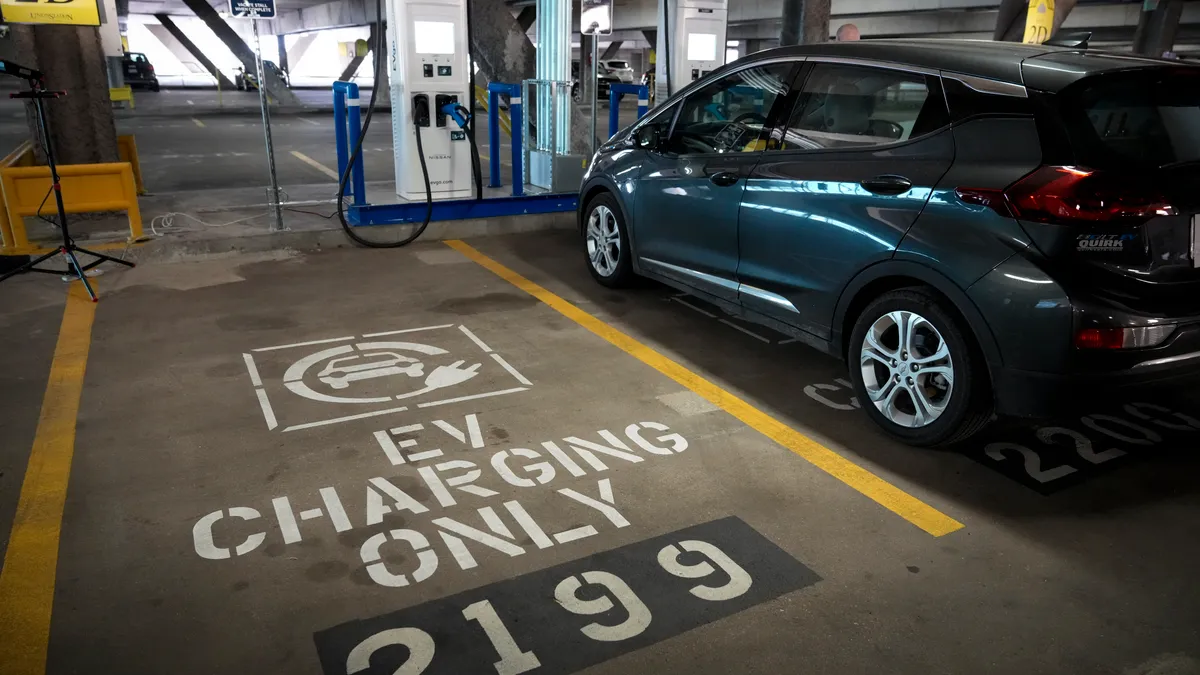Celeste Frye is co-founder and CEO of Public Works Partners, a planning and consulting firm that works across the government, nonprofit and private sectors.
Electric vehicles (EVs) may have been a novelty not long ago, but now it’s clear: They are the future of transportation. As EV technology surges ahead and the environmental impact of gas-powered cars becomes more apparent, cities across the U.S. are rolling out plans to accommodate this shift.
Of course, that planning is not as simple as encouraging residents to buy electric. Cities need to build new EV infrastructure and – just as importantly – continue to support and maintain it.
Before a city begins building EV infrastructure, it’s essential to have the right foundation in place. First, municipalities need the will — that is, a critical mass of residents who are eager to adopt the technology. To determine whether this will exists, cities can commission surveys, market analyses, community visioning sessions, charrettes, and other research. Cities also need the political capital. In other words: Will local lawmakers embrace and support this work? Whether the political capital exists can be gauged by reviewing recent and upcoming energy reforms, election platforms, and budgets.
To build will and political capital — or to harness it if it already exists — cities must have a solid understanding of the societal benefit of EV infrastructure. And to be clear: There are vast benefits. New and fast-growing markets around non-fossil fuel energy have the ability to bring opportunities and innovations to like-minded cities. These range from markets for infrastructure building, EV manufacturing and beyond. What city wouldn’t want the next Tesla factory in their downtown?
Other benefits include increased property values. "House prices are higher near electric vehicle charging stations," according to Realtor.com. Meanwhile, EVs and hybrid vehicles make for quieter, cleaner streets and neighborhoods, contributing to environmental justice. Indeed, recent COVID shutdowns showed what a difference fewer gas-powered cars can make. During the pandemic, daily global emissions fell 17% by early April 2020 compared to the mean levels in 2019, with "just under half from changes in surface transport," according to the scientific journal Nature Climate Change.
Lastly, EVs mean more money in residents’ pockets: "EV fueling costs are 50 to 75% lower than for ICE [internal combustion engine] vehicles,” writes Power Mag. Who can argue with that?
Once the case is made for EV infrastructure, it’s time for cities to address the next big obstacle: developing a workforce that can tackle such an undertaking. In other words: Who’s going to build it, and how?
To begin answering that question, it’s important to note that new skill sets are absolutely necessary. Electric cars require different methods of care and upkeep than gas cars. True, they don’t need as much maintenance as gas-powered cars — but they still require specialized knowledge. Mechanics need to be trained on the complex computerized systems that run electric cars.
Public policy can play a role here. City and state governments can pass legislation that restricts the sale of gas-powered cars. This, in turn, will prompt stakeholders like mechanics and car dealership owners to invest in the required skills and expertise.
As cities introduce workforce development initiatives, they will encounter challenges. For example, some consumers are reluctant to make the switch from gas to electric. Why? People have some fair concerns about the reliability of the technology, the durability of the battery and the potential of a problematic battery stranding them far from home.
As cities confront these challenges, it’s wise to surface past success stories. Plenty of regions around the world have invested in EV infrastructure and benefited greatly. The California Energy Commission, for example, recently awarded a grant to tech company EVMatch to install charging stations in the parking lots and garages of apartments in Los Angeles, San Diego and Santa Clara counties. Meanwhile, the city of Houston recently partnered with BP and Uber to explore the deployment of EV charging hubs throughout the city, potentially supporting the city’s plan to achieve 30% EV adoption by 2030.
Those efforts also come as the Biden administration recently signed an executive order that set a goal to have EVs represent half of all vehicles sold in the U.S. within the next decade.
EV are also on the rise globally. Amsterdam, London, Oslo, Norway, and Shenzhen, China, have made big strides, according to the International Council on Clean Transportation.
As more cities invest in EV infrastructure, it’s crucial that others follow their lead. It’s also important for cities to invest in the necessary workforce development initiatives. With the will and the right initiatives, your city could be cleaner, healthier and more economically successful.



















